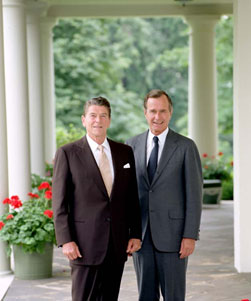
Many of the political issues of the 1980s can be summarized in one word: “Reaganomics.” This term referred to Reagan’s economic policies. Ronald Reagan became the 40th president of the United States in 1981. When he entered office, the United States was experiencing high taxes as well as high unemployment rates.

During his campaign for the presidency, Reagan promised to change the American economy. He promised to cut taxes and reduce government involvement in the economy. His plan, named “Reaganomics” by the media, was based on the trickle-down theory: a tax break on the highest incomes will result in economic growth that will ultimately trickle down to those with the smallest incomes.
The following statistics regarding Reagan's eight-year administration are provided on the Reagan Foundation website:
Excerpt from Reagan Foundation
By 1986, Reagan’s economic policies had created an adverse effect. Tax breaks and increased spending caused many deficits in the federal budget. The national debt was climbing. The Tax Reform Act of 1986 was then passed. This act reversed many of the deductions that had been handed out earlier in the administration. The act also gave exceptions to those on the lower end of the economic scale. The result was a more balanced American economy for more Americans and a period of prosperity for America.
Reagan’s economic policies were impacted by his foreign policies. Much of the government spending during the Reagan administration was defense spending. Under Reagan’s Peace Through Strength program, military spending increased by 35 percent. This program aimed at coming to a peaceful resolution with the Soviet Union by making sure that the United States was properly armed against its enemies.
Reagan’s program was successful. He was able to negotiate an agreement for both countries to eliminate certain nuclear weapons.